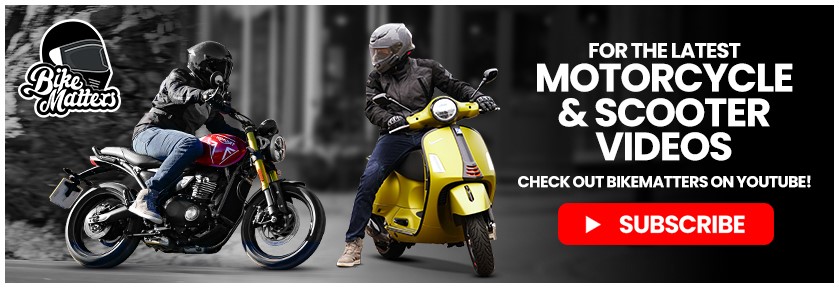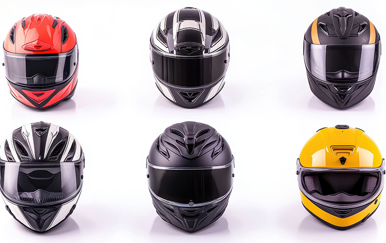A motorcycle accident can come out of nowhere: one moment you’re riding your bike and the next thing you know, you’re disoriented, hurt, and confused.
It can be hard to know what you need to do in that moment, especially if you’re a young rider, but it’s vital to make sure you keep yourself safe after an accident and do everything you can to ensure you follow the right processes.
In this guide, we’re going through the steps you need to take after your accident – from coming off your bike to feeling confident enough to get back on it again.

Check yourself over for injuries

In the aftermath of an accident, adrenaline may be masking your symptoms, so it’s important to check for injuries even if you feel okay.
Take your time when moving, and if you’re experiencing severe back or neck pain and suspect you’ve suffered a spinal injury, stay still and call 999.
Pay close attention to any dizziness, loss of vision, or numbness. If you experience any pain, seek medical attention immediately.
What to do if the third party is hurt
Once you’re confident that you’re okay, check if anyone else involved in the accident has been injured. If you believe someone may have been injured, call the emergency services immediately.
Try to help the injured party if you can safely do so, but don’t remove their helmet unless they need urgent CPR that you can administer, and do not move them unless they’re in danger, as this may further aggravate a spinal injury.
Call the emergency services immediately
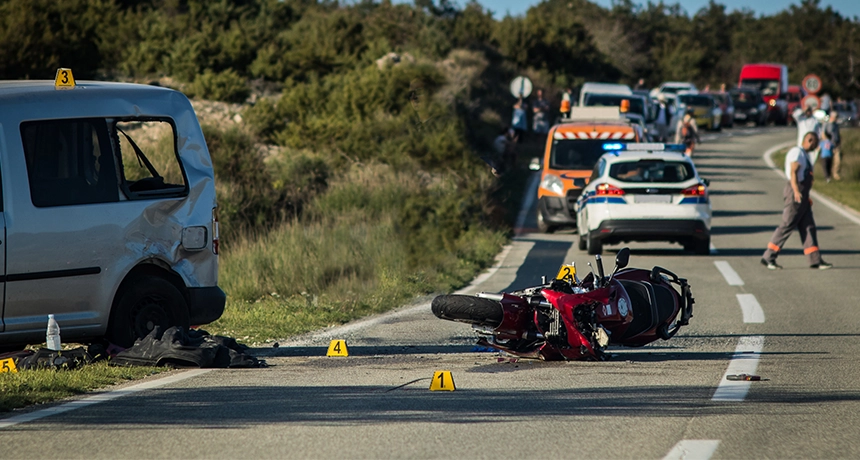
After a collision, it’s important to call the police if:
There is an obstruction on the road caused by the accident
If you’re unable to move the vehicles involved, you’ll need to call the police, as an obstruction could cause further accidents.
If the other party involved has failed to stop and provide their details
It is a legal obligation to provide your details after an accident. If the other party has refused to do so, you can call 101 to report this. If it is safe to do so, try to gather additional evidence.
You believe an offence has been committed
If you believe the other party is drunk driving, driving aggressively, or showing any other signs of dangerous driving, report this to the police immediately.
Do not Apologise or Accept Liability at the Scene of the Crash
In a high-stress situation like this, it can be natural to feel the need to apologise.
It’s important to ignore this instinct, however, as an apology can imply that you are the one at fault. Once you have admitted liability, you cannot go back, and this could be used against you in future legal proceedings.
Even if you believe you are at fault, it’s hard to have the full picture in the immediate aftermath. It’s always worth taking a moment to gather your thoughts and waiting until you have more information.
Exchange your Personal & Insurance details with the third party
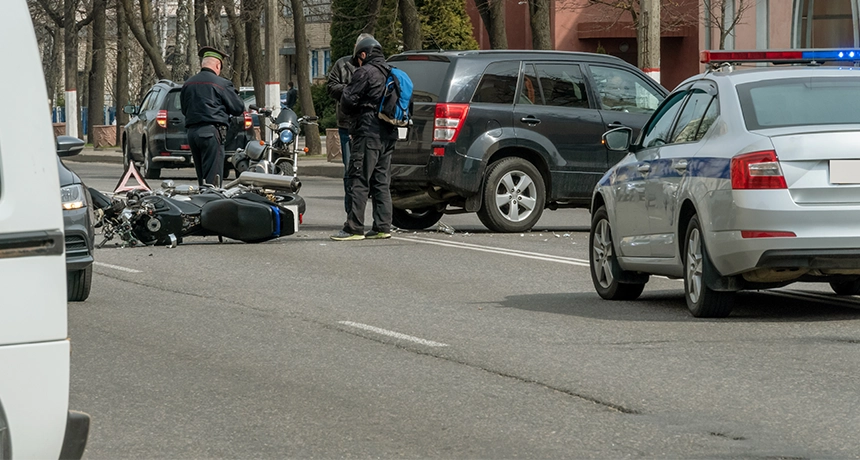
It’s a legal requirement to exchange insurance details after an accident that has caused damage or injury. Failing to do so will complicate insurance claims and could lead to criminal charges.
What information will my insurance need for a motorcycle claim?
Make sure you have all the necessary information your insurance company will need before leaving the scene of the accident.
Some of the questions your insurance provider may ask when making a claim include:
- Where did the accident happen?
- What was the date and time of the accident?
- What are the names and contact details of any other parties involved?
- What is the registration number of the third party?
- What are the insurance details of the third party?
- Were there any witnesses? Can you provide us with their names and contact details?
- Was anyone injured?
To corroborate any claim, take photos of the scene, road conditions, and any injuries or vehicle damage – but only if it’s safe to do so.
What to do if you are involved in a hit-and-run accident
If you’ve been involved in a hit-and-run accident, contact the police as soon as it’s safe to do so. Call 999 if you’ve sustained any injuries, take photos, and get witness details.
Don’t chase after the other vehicle, as this will put you in further danger.
If you’ve been hit by an uninsured rider or driver
If you’ve been hit by an uninsured vehicle, you can claim via the Motor Insurer’s Bureau. Through its Uninsured Drivers Scheme, you may be able to claim for vehicle damage, hire charges, loss of use, and treatment.
If you have comprehensive insurance, you will still be able to claim from your insurer in this scenario. However, if you have other uninsured losses, you may be able to recover them from the MIB.
Is it important to collect photos at the scene of the accident/crash?
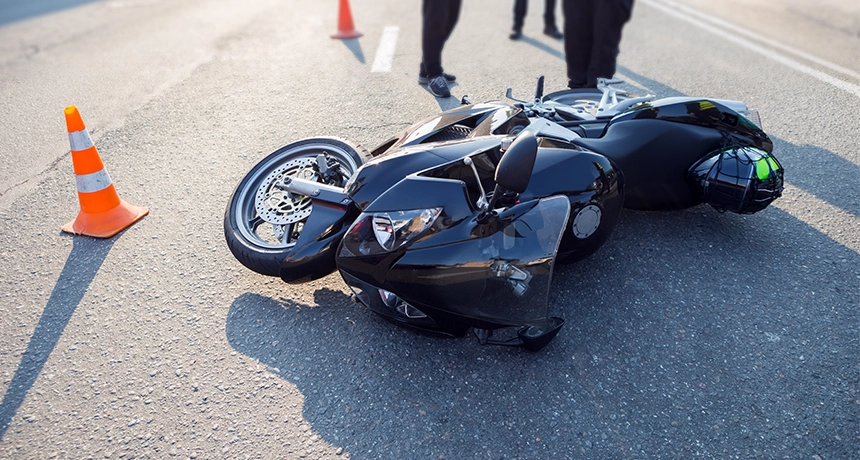
When it comes to making a claim, alongside collecting the details of the third party and any other eyewitnesses, taking photos and documenting the scene are among the most crucial steps you can take to establish your side of the story.
You’ll want to ensure you have photos and videos of:
- The vehicles involved in the accident
- Any adverse road conditions
- Injuries that you or another party have sustained as a result of the accident
- The position of the vehicles in the road
What to do if there are other witnesses at the scene
Obtaining the contact details and statements from anyone else who may have witnessed the accident can make a significant difference to your claim, as it will provide outside perspectives on the events of the accident.
Ask witnesses to be as specific as possible in their statements, including a chronological account of what happened, any observations they had about road conditions or traffic, and any evidence they may have.
Inform your insurers right away
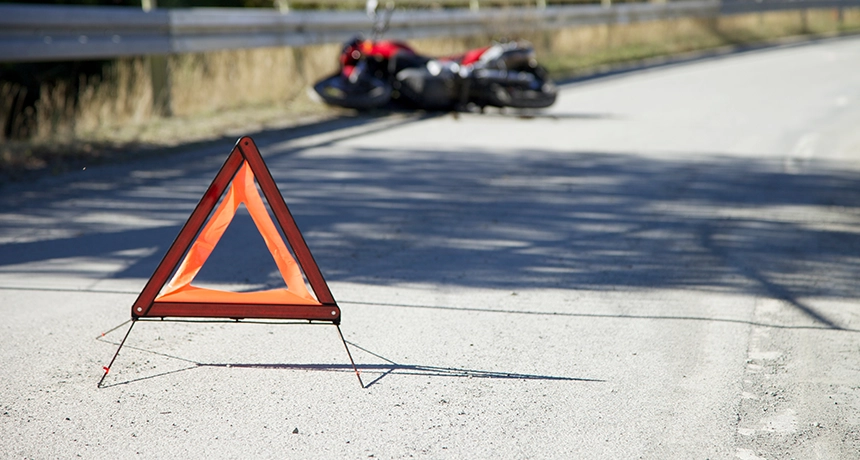
Once you have received immediate medical attention, your priority should be reporting the accident to your insurer. You will have a contact number on your insurance documents.
Try to do this as soon as possible, as delays can complicate the claims process.
Do you have the correct insurance type to submit a claim?
Broadly speaking, there are three types of insurance coverage. These are:
- Third party only (TPO): The most basic form of cover, third-party will cover damage and injury to other people that have been caused by the policyholder. TPO will not insure you for damages to your vehicle or injury to yourself in the event of an accident.
- Third party fire and theft: This type of cover will insure everything under TPO, as well as any damage caused by fire or the theft of your vehicle. However, aside from this you will still not be covered for any other damage to your vehicle or personal injuries sustained under this cover.
- Comprehensive: With Comprehensive motorcycle insurance, you will be covered for everything mentioned in the previous two types of insurance, as well as accidental damage to your vehicle due to an accident, regardless of who is at fault.
If you’re unsure of what the right type of insurance for you is, read our guide to choosing the right motorcycle insurance. For your full insurance policy coverage, please consult your policy documents.
Think twice before riding home after a bike crash
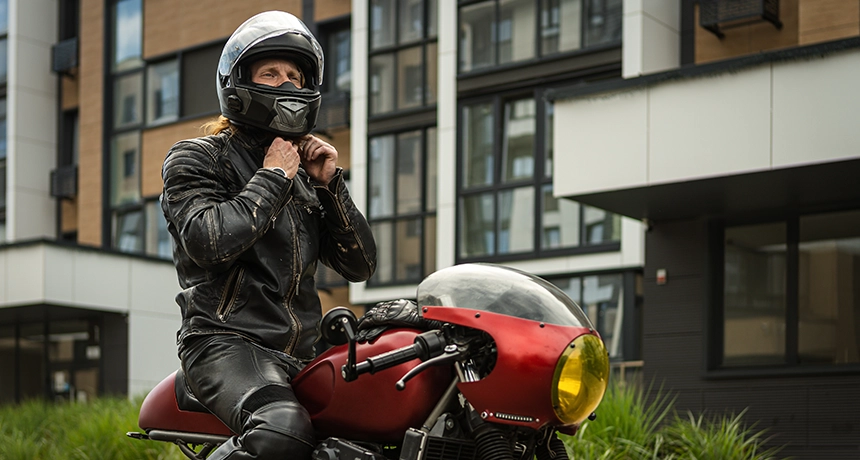
After an accident, you might want to jump right back on your bike, but it’s important to assess any potential injuries or damage to your vehicle before you start riding home.
Can you ride your motorcycle home after an accident?
If you’re in pain or don’t have a full range of motion, it’s not safe to ride. Pain will impair your ability to control the bike and focus on the road.
Also, if your helmet has been damaged there’s a chance you have a head injury that you’re yet to notice. You’ll also want to be confident that your bike is in a safe enough condition to ride before getting back on it.
The bottom line is that if you’re not sure if it’s safe for you to ride, don’t do it.
Is it legal to ride a crashed bike home?
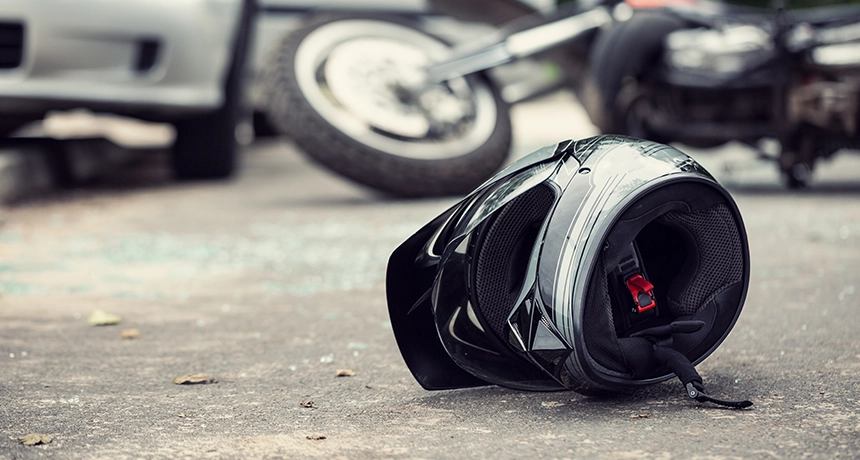
The short answer? It depends.
For a bike to be legally ridden after an accident, it has to be considered ‘roadworthy’. Unfortunately, this can be interpreted in different ways by different people, and there’s no way to conduct an in-depth check of your bike.
However, before setting off on your bike, you need to ensure that – at a minimum:
- The brakes are operating fully
- Full range of motion when steering
- Front & rear lights are working correctly
- Registration is still readable & attached to the bike
If your bike isn’t roadworthy, then it will no longer be covered by your insurance provider, so choosing to ride it will be at the detriment of any future claims you want to make. You may also be charged with dangerous driving, which can lead to anything from points on your licence to an unlimited fine.
The decision to ride your motorbike after an accident is yours, and yours alone. If this is a decision you have any difficulty making, it’s best not to ride your bike home.
What to do if your bike helmet has been damaged
Even if your helmet looks completely fine, you should replace it after an accident.
Whilst you should be able to see if the outer shell has been damaged, the inner lining – which absorbs the impact of a head trauma – can be compromised without any visible issues.
A bike helmet is designed to protect you from head trauma, and after you get into an accident, it will have done its job.
What to do if your bike gear has been damaged
As there is no legal requirement to wear protective clothing other than a helmet in the UK, there is no legal obligation to replace anything damaged.
However, any damage will make it significantly less effective if you come off your bike in the future, so if it looks damaged, it’s best to replace it.
Taking out helmet and leathers insurance can help you replace costly protective gear after an accident. If you take out a policy with Lexham, you can insure up to £1000 of motorcycle clothing for £42 a year in the event. This covers road traffic accidents on your own vehicle, and proof of purchase will be required.
If your bike is unsafe to ride, seek alternative transport home
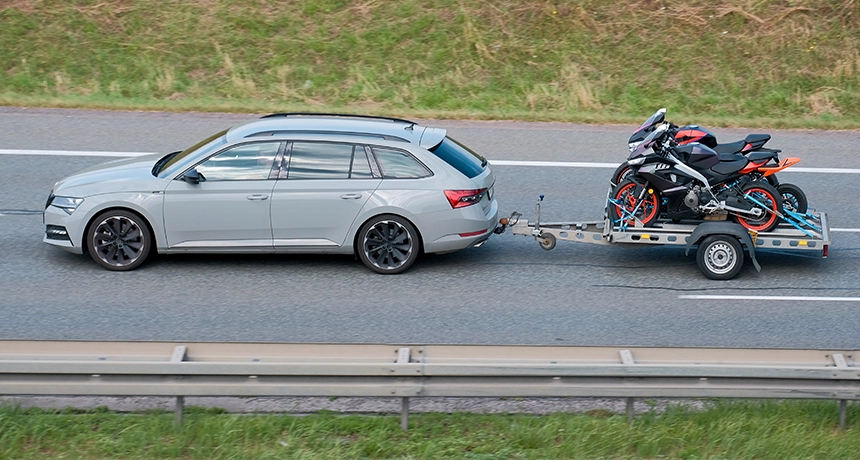
If you don’t need to be taken to the hospital, it can be hard to find a way back home. You may have a friend nearby who could help you if the accident happened locally, but if not, you may need to rely on public transport.
Transporting your bike home can also be a challenge. Your breakdown insurance may be able to assist you depending on your level of cover, but you will need to check your policy to make sure this applies to you.
If possible, lock and secure your bike
When leaving your bike at the scene of the accident, use a chain and lock to secure it to a sturdy object, if possible, to keep it as safe and secure as you can.
If you can move it, secure it in a safe and well-lit area if one is nearby, and cover it to deter thieves.
Arrange for your motorcycle to be recovered
After an accident, you can arrange directly for your motorbike to be recovered by a service like the RAC or AA, who will tow your bike to a nearby garage or place of safety.
In some cases, your insurer may be able to arrange for your motorbike to be recovered for you, but you will need to check if your breakdown insurance covers you for road accidents, as this varies between insurers.
Take steps to rebuild your confidence after the crash
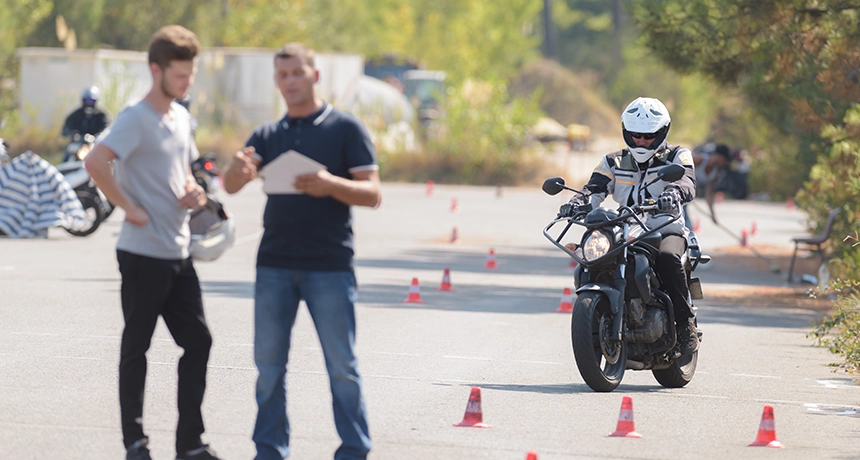
It can be hard to know when to get back on your bike.
While you may be eager to start riding again, you need to ensure you’re both physically and mentally ready first. If you’re still injured, you’re more likely to get into an accident, which could lead to a longer recovery time.
When to get back on a bike after an accident
Being in a motorbike accident – even if it wasn’t your fault – can shake your confidence, which is why it could be advisable to take a refresher course before returning to the roads.
This can help you build your confidence back up and provide you with the reassurance that you’re ready.
The most important thing to remember is that you need to take your time. Ease yourself back into it, and don’t pressure yourself to start riding again before you’re ready.
Taking an advanced rider course
If you’re trying to get back into riding after an accident, taking an Advanced Rider Training course will help rebuild your confidence and make you a more well-rounded rider.
Completing courses like this can also reduce your insurance rates with most insurers.
The DVSA enhanced rider scheme is a great way to further develop your skills and build your confidence.
On this government-backed course, your instructor will assess your current riding ability and work with you to develop a personalised training plan. You can also sign up for optional extra modules, including advanced-level filtering and riding on motorways.
Any other further training
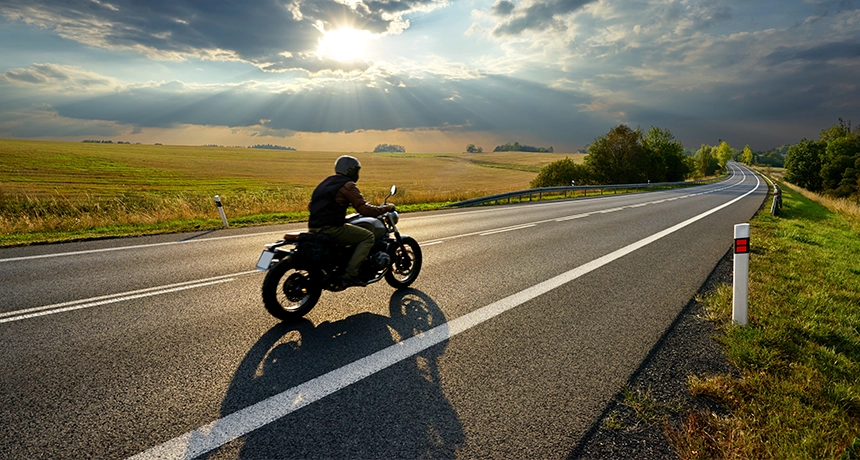
For further training, you could also complete a Biker Down course.
These courses can prepare you for what to do at the scene of a motorcycle accident, from emergency first aid to crash scene management, helping you build up practical first aid skills.
However, any relevant first aid training can be extremely useful, as it will help you be more prepared for any worst-case scenario.
The Last Stop!
So, there you have it. I hope you’ve found this guide to motorbike accidents helpful and allows you to feel more prepared to handle any potential future accidents.
Last but not least, if you do have a motorcycle or scooter of your very own you need to insure, make sure to get a quote direct with Lexham.

